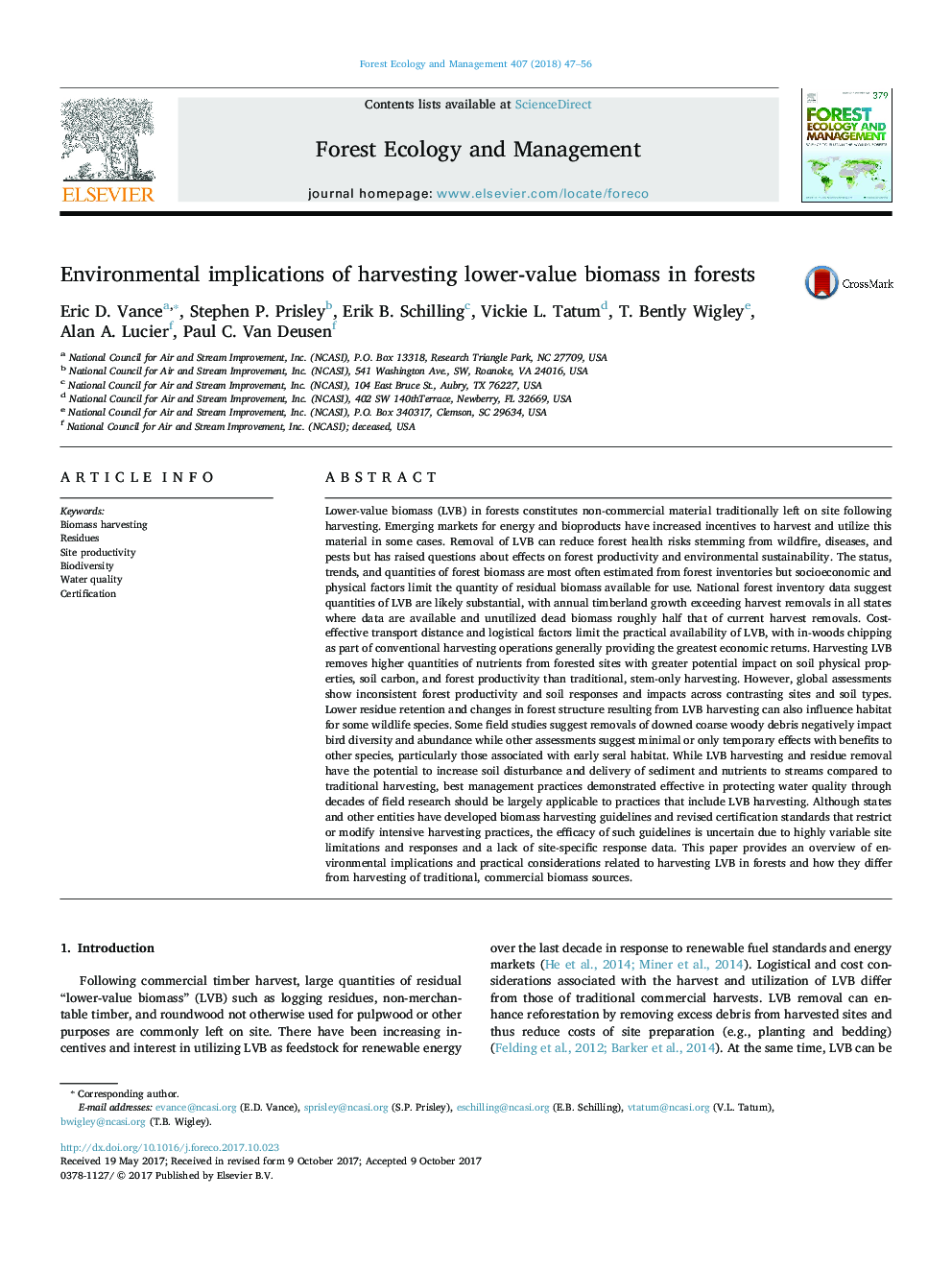| کد مقاله | کد نشریه | سال انتشار | مقاله انگلیسی | نسخه تمام متن |
|---|---|---|---|---|
| 6541955 | 1421351 | 2018 | 10 صفحه PDF | دانلود رایگان |
عنوان انگلیسی مقاله ISI
Environmental implications of harvesting lower-value biomass in forests
ترجمه فارسی عنوان
اثرات زیست محیطی از برداشت زیست توده کم ارزش در جنگل ها
دانلود مقاله + سفارش ترجمه
دانلود مقاله ISI انگلیسی
رایگان برای ایرانیان
کلمات کلیدی
برداشت زیست توده، باقی مانده بهره وری سایت، تنوع زیستی، کیفیت آب، صدور گواهینامه،
موضوعات مرتبط
علوم زیستی و بیوفناوری
علوم کشاورزی و بیولوژیک
بوم شناسی، تکامل، رفتار و سامانه شناسی
چکیده انگلیسی
Lower-value biomass (LVB) in forests constitutes non-commercial material traditionally left on site following harvesting. Emerging markets for energy and bioproducts have increased incentives to harvest and utilize this material in some cases. Removal of LVB can reduce forest health risks stemming from wildfire, diseases, and pests but has raised questions about effects on forest productivity and environmental sustainability. The status, trends, and quantities of forest biomass are most often estimated from forest inventories but socioeconomic and physical factors limit the quantity of residual biomass available for use. National forest inventory data suggest quantities of LVB are likely substantial, with annual timberland growth exceeding harvest removals in all states where data are available and unutilized dead biomass roughly half that of current harvest removals. Cost-effective transport distance and logistical factors limit the practical availability of LVB, with in-woods chipping as part of conventional harvesting operations generally providing the greatest economic returns. Harvesting LVB removes higher quantities of nutrients from forested sites with greater potential impact on soil physical properties, soil carbon, and forest productivity than traditional, stem-only harvesting. However, global assessments show inconsistent forest productivity and soil responses and impacts across contrasting sites and soil types. Lower residue retention and changes in forest structure resulting from LVB harvesting can also influence habitat for some wildlife species. Some field studies suggest removals of downed coarse woody debris negatively impact bird diversity and abundance while other assessments suggest minimal or only temporary effects with benefits to other species, particularly those associated with early seral habitat. While LVB harvesting and residue removal have the potential to increase soil disturbance and delivery of sediment and nutrients to streams compared to traditional harvesting, best management practices demonstrated effective in protecting water quality through decades of field research should be largely applicable to practices that include LVB harvesting. Although states and other entities have developed biomass harvesting guidelines and revised certification standards that restrict or modify intensive harvesting practices, the efficacy of such guidelines is uncertain due to highly variable site limitations and responses and a lack of site-specific response data. This paper provides an overview of environmental implications and practical considerations related to harvesting LVB in forests and how they differ from harvesting of traditional, commercial biomass sources.
ناشر
Database: Elsevier - ScienceDirect (ساینس دایرکت)
Journal: Forest Ecology and Management - Volume 407, 1 January 2018, Pages 47-56
Journal: Forest Ecology and Management - Volume 407, 1 January 2018, Pages 47-56
نویسندگان
Eric D. Vance, Stephen P. Prisley, Erik B. Schilling, Vickie L. Tatum, T. Bently Wigley, Alan A. Lucier, Paul C. Van Deusen,
